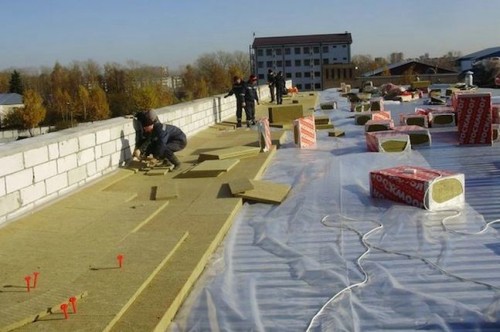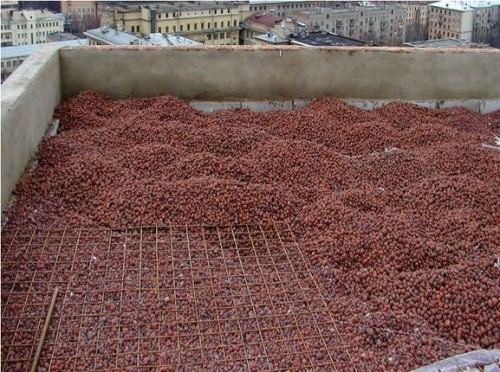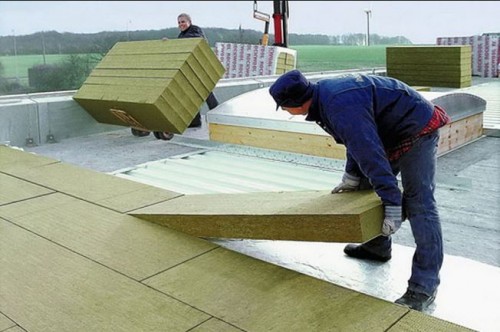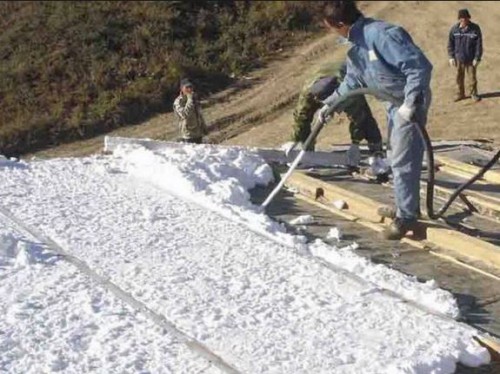
Warming with a flat roof with their own hands Insulation,Construction
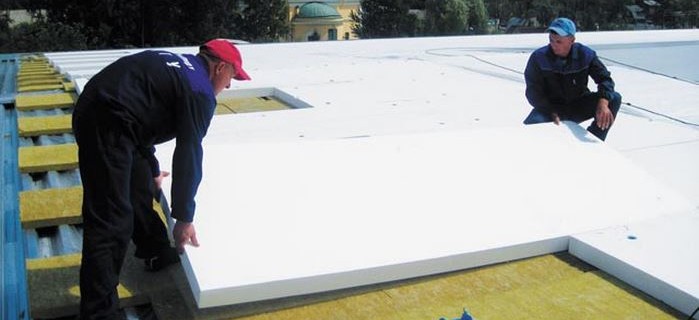
About a quarter of the heat loss occurs through the roof, since on the principle of convection - the heated air rises upwards. Insulated flat roofing not only contributes to the preservation of heat in the cold season, but also prevents the heating of the room in the summer. Consider the main methods and materials used to insulate a flat roof.
Content
The need for insulation roofing
Flat roof, called a roof with a bias from 2 to 12 degrees. Lica provides unobstructed flow of water. Most often, the flat roof is applied on technical buildings, garages, verandas, etc.
- The lavetled surface of the roof when contact with cold air, contributes to the formation of condensate indoors.
- The resulting condensate contributes to the wear and destruction of the roof.
- Insulated flat roofing, creates a normal indoor microclimate.
Features of the roof structure
Carrier slab overlap is the basis of a flat roof. It is performed from reinforced concrete, metal sheets or other materials. Scope slopes are performed by a cement screed or bulk clay. Flat roofing is two types: inversion and ordinary - traditional. In any case, its design includes:
- Monolithic plate from reinforced concrete or professional flooring.
- Vaporizoation from bitumen or its derivatives
- Heat insulation.
- Waterproofing.
The order of laying the layers depends on the roof design. In the usual, traditional embodiment, the insulation layer is covered with waterproofing. With the inversion structure of the roof - waterproofing is covered with insulation.
- Inversion roofs can carry additional load on themselves. On the roof you can equip the terrace or winter garden
- The traditional roof, performs the only function - protection of the building from precipitation. No additional loads for such a roof are provided.
Materials for thermal insulation of flat roof
For insulation of a flat roof, a wide variety of materials are applied. Many of them have high technological qualities and low cost.
- Polystyrene foam. The material is characterized by high strength, resistance to compression and stretching. It has a small proportion, it perfectly withstands the temperature differences, does not absorb moisture and fire-resistant. Produced in the form of plates of different sizes, easily processed. The service life of polystyrene from 25 to 80 years.
- Ceramzit. This is one of the most reliable, ways of insulation of the roof. An environmentally friendly mixture of sand grams is poured on the surface of a flat roof. The thickness of the layer from 10 cm and above. Then the lined layer is covered with roofing material. Alternatively - rubberoid or rubyamast.
- Eau. This material has a low heat transfer coefficient, it is not amenable to rotting, it does not fit rodents, mold and fungus. The carrier is produced in the form of mats of different thickness or in rolls.
Recently, a novelty has appeared - liquid foam. This material has the same properties as foam plastic. Distinctive is the method of application. With the help of a special sprayer, liquid foam is applied to the base. After frozen, a monolithic, hermetic layer of high-quality insulation of the desired thickness is formed. The disadvantaged of this method is the need for additive fixing of the insulation by drywall or foam plates.
Technology Warming Flat Roof
All technological methods of insulation of the roof are obeyed by one algorithm, and it is not difficult to perform insulation with their own hands. It does not matter whether you are insulated with an eco-art, foam, an enemy or expanded polystyrene. The principle and sequence of work, for these materials the same one.
- First of all, you need to choose the appropriate material and calculate the insulation area. The insulation is recommended to purchase with a small margin, as in the process of cutting plates, additional entire plates of the larger area may be needed.
- The surface for the installation of the insulation must be dry and clean. If you are using polystyrene foam, it is perfectly coping with waterproofing, but vaporizolation is needed.
- There should be a gap between the film and insulating plates, about 2 cm. In this case, condensate will not accumulate. Sometimes an anti-condensate film is used.
- To the base, the insulation is glued with hot bitumen mastic, special frost-resistant adhesives, liquid nails, etc. If the base allows the insulation plate, nails with a large hat, use anchor or dowel.
- For proper insulation of the roof, all the gaps and gaps in the plates of the slabs are recommended to blew the mounting foam. This will avoid cold bears.
For warming the roof from the professional leaf, a traditional technique is used. Such a roof can not carry additional loads. Metal sheets of professional flooring, have great heat-conductivity. The optimal option would be insulation of such a roof of foam.
In order to be dry and warm in the house, it is necessary to strictly follow the rules for mounting the insulation and pay special attention to the quality of the materials used.




